Treaty of Madrid (1667) facts for kids
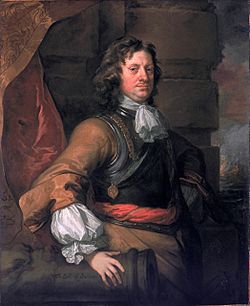
|
|
| Context | Spain and England undertake not to assist enemies of the other; England agrees to mediate an end to the Portuguese Restoration War; Spain awards England commercial privileges |
|---|---|
| Signed | 23 May 1667 |
| Location | Madrid |
| Condition | 21 September 1667 |
| Negotiators | |
| Signatories | |
| Parties | |
| Ratifiers | |
| Language | Latin |
The Treaty of Madrid, also called the Earl of Sandwich's Treaty, was an important agreement. It was signed on May 23, 1667, between England and Spain. This treaty was one of several deals made to stop France from expanding its power under King Louis XIV.
The treaty gave English merchants special trading rights in the Spanish Empire. These rights lasted until 1714. Both countries also promised not to help each other's enemies. England agreed to help end the Portuguese Restoration War (1640-1668). This led to the 1668 Treaty of Lisbon between Spain and Portugal.
A separate agreement, the 1670 Treaty of Madrid, later settled the issue of Spanish lands that England had taken during the Anglo-Spanish War (1654-1660).
Contents
Why the Treaty Was Needed
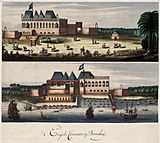
The Treaty of Madrid was part of several agreements signed between 1662 and 1668. These treaties were needed because the balance of power in Europe was changing. For example, the friendship between France and the Dutch Republic was weakening. Also, France was becoming much stronger than Spain under King Louis XIV.
By the mid-1600s, the Spanish Empire was still very large. However, it needed peace after fighting wars for about 100 years. The war between France and Spain ended in 1659. The war between England and Spain paused when Charles II became king again in England in 1660.
Spain then focused on ending its long war with Portugal. In 1656, King Philip IV of Spain agreed to help Charles II get his throne back. In return, Charles was supposed to help Spain against Portugal. However, in May 1661, Charles decided to marry Catherine of Braganza, a Portuguese princess. He also agreed to give Portugal military help.
This happened for several reasons. One reason was that King Philip insisted England return Jamaica (captured in 1656) and Dunkirk (captured in 1658). England did not want to give up Jamaica. The English Parliament even voted to keep Jamaica in September 1660. Charles II sold Dunkirk to France in 1662.
England also gained a lot from the marriage. English merchants could now trade in Portuguese markets in Brazil, Africa, and the Far East. England also got Tangier and Bombay. These places gave England important bases for trade in the Mediterranean Sea and India. These benefits were too good for England to refuse, even though it made relations with Spain difficult.
How the Treaty Was Agreed Upon
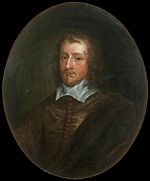
Sir Richard Fanshawe was the English ambassador to Portugal from 1662 to 1666. He also became ambassador to Spain in 1664. His job was to create a trade treaty. He also had to get money for losses and confirm that England could keep lands taken from Spain between 1654 and 1660, especially Jamaica.
In 1663, King Philip of Spain started a big attack against Portugal. He refused to talk while England was helping the "rebels" in Portugal. Talks began in 1664 after the Spanish attack failed. They stopped when the Second Anglo-Dutch War started in March 1665. Talks began again after Spain lost the Battle of Montes Claros in June. King Philip died in September. His three-year-old son, Charles II, became king. Charles's mother, Mariana of Austria, became the ruler until he was old enough.
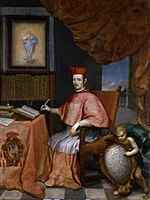
The new Spanish government wanted to end the war with Portugal quickly. Juan Everardo Nithard, a Spanish minister, said that a treaty with England depended on England helping Spain end the war with Portugal. However, King Louis XIV of France encouraged Portugal to demand harsh terms from Spain. Louis wanted to stop Spain from sending more soldiers to the Spanish Netherlands.
In December 1665, Fanshawe finished a draft of the treaty with Count Peñaranda of Spain. They based it on an earlier treaty from 1630. But, they did not know about other talks happening in London. The Spanish ambassador, Count Molina, was talking with the Duke of York and Arlington. King Charles II of England refused to approve Fanshawe's version. He said Fanshawe had gone beyond his instructions. Charles replaced Fanshawe with Lord Sandwich. Fanshawe died in June 1666 before he could return home.
In March 1667, France and Portugal signed their own treaty. It was a ten-year agreement to help each other against Spain. On May 24, French troops entered the Spanish Netherlands, starting the War of Devolution. Spain was now fighting Portugal and losing land to France. Because of this, Spain quickly agreed to the treaty with England.
What the Treaty Said
In the 1600s and 1700s, trade was very important in diplomacy. Countries believed that there was only a limited amount of global trade. To get more trade, a country had to take it from others. So, countries protected their own trade with tariffs (taxes on imports), import bans, and attacks on other countries' ships or colonies. England complained about two things: being kept out of markets in the Spanish Empire and limits on direct trade between Spain and England.
The old 1630 treaty was canceled. On May 23, 1667, England and Spain signed two new treaties. One was about trade. The other was an agreement for England to help make peace between Portugal and Spain. In a separate part, both countries promised not to help each other's enemies. England would take its soldiers out of Portugal. Spain would stay neutral in the Anglo-Dutch War.
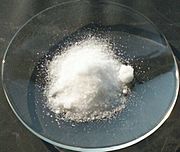
The trade treaty had 40 different parts. The most important was Article Seven. This part was in Fanshawe's first draft but was left out of the original terms. It gave English merchants the same rights as Dutch merchants. They could import goods into European Spain without paying taxes. Articles Seven, Eight, Eleven, and Twelve went even further. They allowed English colonies in North America and the East India Company to send goods directly to Spanish ports.
By giving English merchants trading rights in Spanish America, the treaty accepted England's presence in the Caribbean. It also accepted England's control of Jamaica. However, this was not officially recognized until the 1670 treaty. Article Ten generally protected English ships and warehouses in Spanish ports from customs checks. If there were problems, they would be handled by a local judge chosen by England and approved by Spain.
Articles Fourteen to Seventeen allowed English ships to use ports throughout the Spanish Empire. This was a big deal because it greatly increased where English ships could go. Article Thirty-Eight gave English merchants "most favoured nation" status, like the Dutch and French. This meant they got the best trading terms. Spanish merchants did not like this, so it had to be repeated in the 1670 Treaty.
These trade deals were the first step for England to challenge the Netherlands' strong economic power outside Europe. They were very important and lasted until the War of the Spanish Succession began in 1701.
What Happened Next
The treaty was very good for England. The rules for English trade in Spain were better and more detailed than those given to France. This helped England because there was a big difference in how much each country traded. One historian, Guillermo Pérez Sarrión, said the 1667 treaty showed "England's complete control of Anglo-Spanish trade." A London merchant later called it "the best flower in our garden." English goods came through Cadiz and were sold there or sent to the colonies. Spanish dyes and wool went to England.
Trade between France and Spain mostly involved large shipments like grain and wood. Local officials could easily control this. English trade was mostly by sea, across the huge Spanish Empire, and much harder to control. The treaty basically let English ship captains decide what goods they listed as "English" on their shipping papers. This allowed English merchants to avoid customs taxes. There was a large and very profitable black market because Spanish colonists wanted these goods.
In September 1667, Afonso VI of Portugal was removed from power by his brother Pedro. The earlier treaty with France was canceled. With England helping, Spain and Portugal signed the Treaty of Lisbon on February 13, 1668. Spain was now free from the war with Portugal. With the help of the Triple Alliance, Spain ended the War of Devolution with France by agreeing to the Treaty of Aix-la-Chapelle on May 5.
The issue of Spanish lands in the West Indies that England had taken in the previous war was settled in the 1670 Treaty of Madrid.
Sources
See also
 In Spanish: Tratado de Madrid (1667) para niños
In Spanish: Tratado de Madrid (1667) para niños


